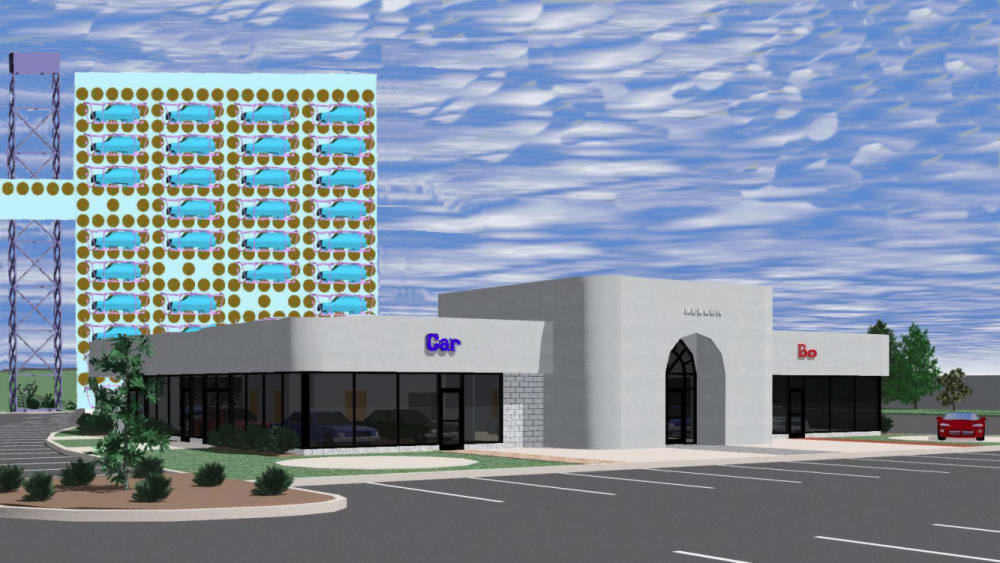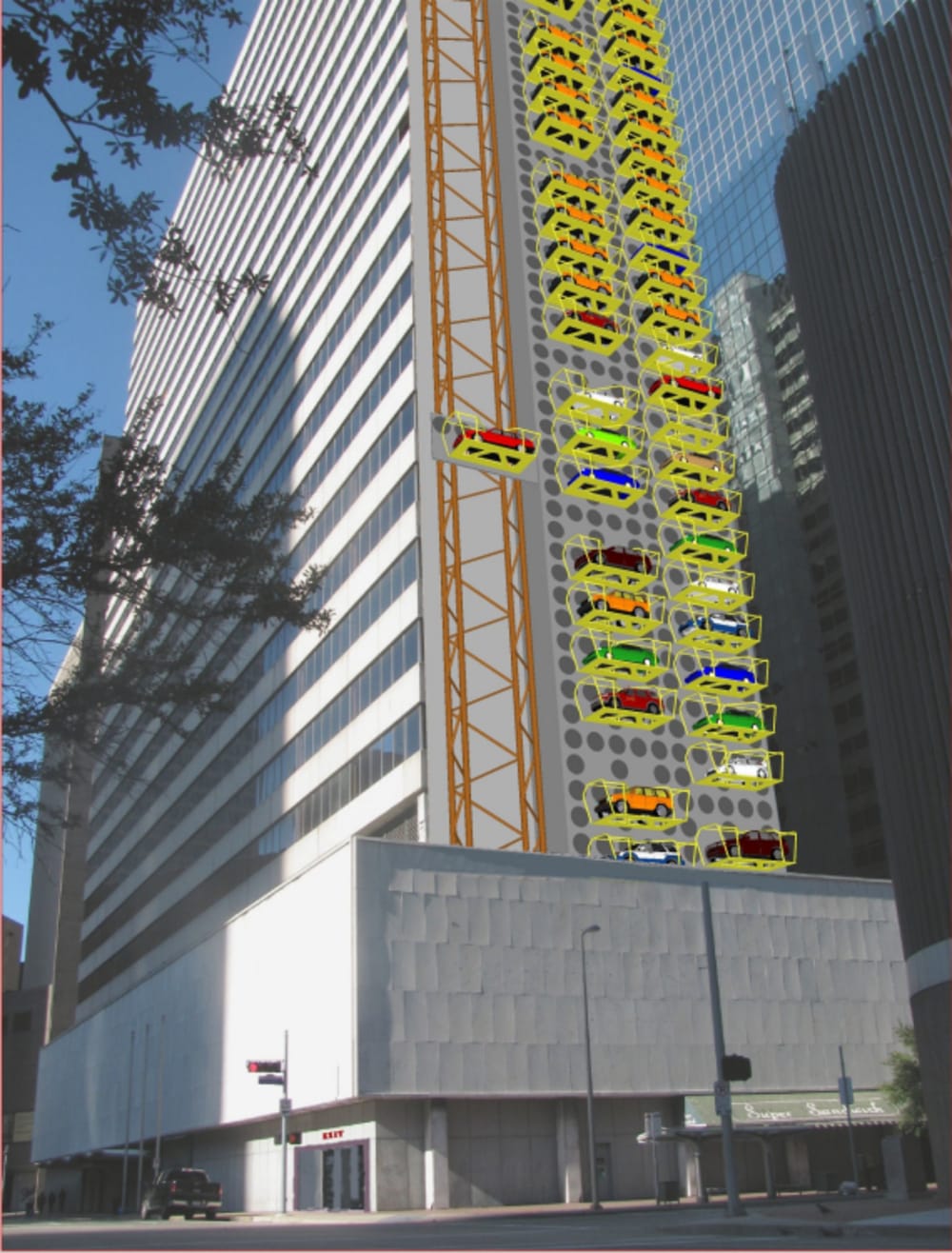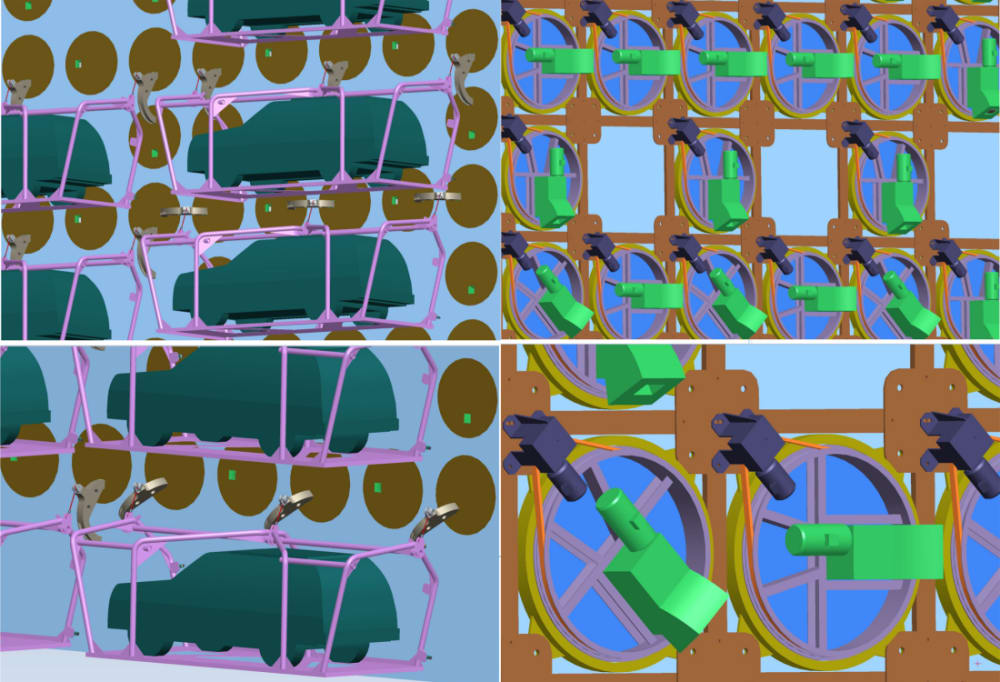Vertical wall parking garage/storage system.
High cost of the land and crowded conditions on the streets of many highly populated modern cities encourages search for affective solutions of motor vehicle parking space with minimal footprint on the ground.
Proposed automatic storage system has many advantages over existing street parking lots, multistory parking garages, above ground or under ground constructions:
- system has smallest footprint on the ground due to the absence of access ramps or drive isles;
- it has no limitations in height (or width) due to distributed power produced by identical driving cells covering full storage surface;
- system is equally economical to be erected on the footprint of 2 vehicles or any larger number of it due to construction type – pre-manufactured modules (driving cells) mounted onto grid of frame structure;
- cost effectiveness is achieved by fabricating fully wired driving modules in mass production quantities on the factory floor and only mounting them in the field on a structure grid and connecting power and communication lines;
- system is suitable to be retrofitted into environment of densely populated city, for example: public parking alongside high-rise building; car dealership inventory parking can use less space and have vehicles exposed for observation, but securely stored; sport venues may use rows of wall parking systems and save acres of space around them, at the same time organizing flow of vehicles in and out.
Vertical parking garage system holds vehicles on individual cradles and fills up storage surface from bottom - up by moving cradles along vertical surface between identical driving cells. In proposed parking garage each cradle held by 3 points and surface movement require synchronized motion of 3 or 6 driving cells. Computerized control part of the system provides algorithm and monitors each cell to optimize motion of the whole parking garage.
To minimize vehicle retrieval time from the storage, high speed lift proposed to provide cradle descend to ground level.
The means of transferring from cell to cell provided by connecting element attached to each holding point of the cradle. Shaped as “C” – partial circular shape, called “claw”, holding element attached to the cradle by swivel joint in the middle of it. Claw has unique topological property of having only 2 degrees of freedom when engaged with perforation in the surface: it can not be separated from the surface, but only spin around the center of perforation or move in and out of it.
Each driving cell of proposed parking garage equipped with drivable disk in the center of the cell with one perforation on periphery of the disk. Claw engaged with perforation of the disk can be driven in and out of the disk by motor assembly mounted on the disk and can be rotated with it around disk’s center.
When neighboring cell’s disk perforations are opposing each other, claw can be transferred from one cell to the other. Minimum 270° of reciprocating disk rotation required to allow transfer in all 4 directions.
Like this entry?
-
About the Entrant
- Name:Eugene Novin
- Type of entry:individual
- Hardware used for this entry:PCSoftware used for this entry:Alibre, SketchUp
- Patent status:pending








